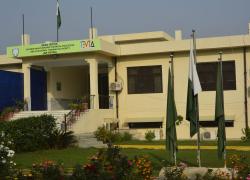The 10 most problematic HR areas in the public sector universities in Pakistan
Human Resource Management is at the nascent stage in Pakistan. Same is the case with public sector universities. Over the years, much attention has not been paid to the management of human resources in the universities in the country. HR planning, job designing and career development are some of the areas that have never been professionally addressed. A comprehensive HR policy does not subsist in a single university. Jobs at various levels are not meticulously defined. The staffing function is not performed systematically. Orientation of the employees is not a common practice. Opportunities for capacity building of the employees are scarce. Compensation is not performance-based. Performance appraisal is outmoded. Career prospects are highly restrained. A separate, full-fledged HR department does exist but in a very few universities.
To be brief HR is one of the most neglected areas in the public sector universities in Pakistan.
Objectives
This blog post delineates some of the problematic HR areas with a focus on ten major streams for further exploration, transformation and modification. This next blog post, the top 10 reasons why the HR issues in the universities are getting complex, further deliberates upon the grey areas in the HR system in the universities to steer the academic leaders, policymakers and practitioners towards reforming HR system in line with global HR best practices.
An overview of HR practices
Universities, in general, have serious problems in connection with managing human resources as very limited understanding prevails about the concept. The human resources are managed in the most obsolete fashion in the universities.
In some cases, it is even worse than the era of personal management. The outdated bureaucratic structure of the public sector is in perfect shape in the universities. The entire HRM system is run by other than HR professionals. Many times, employees are engaged in performing overlapping tasks. Work processes are complicated and over dragging creating an undue delay in dispensation of official work. At the end of the day, more people end up performing less work.
The working environment is highly uncongenial. The hierarchy is intricate and irksome. A little deviation from the approved rules and established practices can put the employee(s) into serious troubles. The performance evaluation mechanism replicated from the government departments is implemented in the universities. Employees are not compensated for what they actually perform. Excellent performance does not necessarily result in promotion, pay increase or a note of appreciation. Similarly, bad performance is not censured. Career growth and staff development remained at the bottom of the priority areas. Training opportunities are few and far between. Besides, there are serious issues concerning the nomination of employees, the relevance of training and the application of training to the job. To be brief there are numerous HR related issues in the universities resulting in poor performance and organizational degeneration.
The key problematic areas
Here, I highlight the top ten most problematic HR areas in the public sector universities:
- Lack of HR vision, mission and strategy
- Lack of basic knowledge and understanding of the HR system and practices
- Defective HR structure and hierarchy
- Challenges in hiring professional staff and faculty
- Role ambiguity and lack of clear responsibilities
- Scarcity of capacity building opportunities
- Lack of effective performance appraisal system
- Defective compensation and reward system
- Lack of opportunities for promotion and prospects for career development
- The trust deficit between faculty and administrative staff
Conclusion
Since, employment in the competitive academic world has become more challenging, that calls for meaningful interaction with sophisticated technology, the public sector universities need to restructure HR system in line with global HR best practice. Some of the above areas need urgent attention, whereas, others can be fixed in the long run. Nevertheless, it is all about the complete transformation of the HR function in line with best HR practices in academic settings.


















